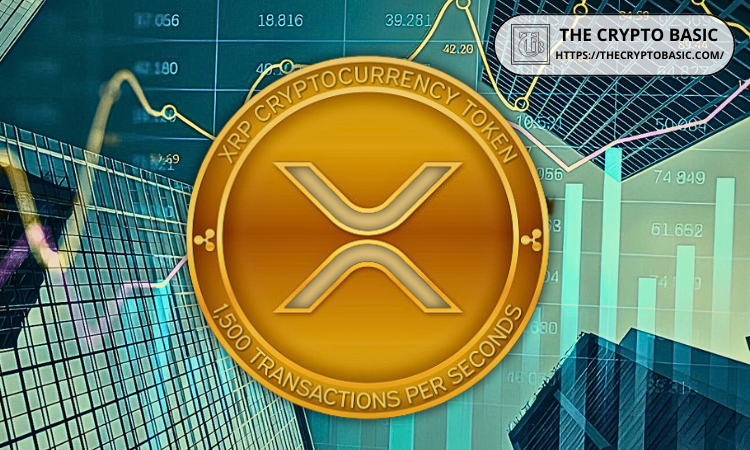Standard Chartered has insight into how the third biggest crypto, XRP, could perform over the next three years.
The multinational bank projects a steady climb over the next three years, with XRP potentially crossing into double digits for the first time in its history. Notably, XRP is trading at $3.05 today, up 7% over the past 24 hours.
XRP Price Targets Through 2028
Standard Chartered’s crypto researcher, Geoffrey Kendrick, outlined a roadmap that places XRP at $5.50 by the end of 2025, $8 in 2026, and $10.40 by 2027. By the end of 2028, Kendrick believes XRP could stabilize around $12.50, implying gains of more than 300% from current levels.
According to Kendrick, XRP could even challenge Ethereum’s dominance in the crypto hierarchy within this timeline. Specifically, he noted that XRP could become the second-largest crypto asset by market value within four years.
Currently, XRP’s market cap stands at $182 billion. Meanwhile, Ethereum, trading at $4,744, has a market cap of $573 billion—more than three times that of XRP.
If XRP were to reach $12.50 within three years, as Standard Chartered projects, its market cap would rise to approximately $743 billion, surpassing Ethereum’s current valuation.
However, Ethereum is not expected to remain idle while XRP surges 300% over the next three years. If ETH trades above $6,500 by 2028, its market cap would still stay ahead of XRP’s.
Interestingly, more recent forecasts from Standard Chartered suggest Ethereum could reach $7,500 by the end of this year. Similarly, some popular community forecasts for XRP suggest it could even surpass $20 this year.
Catalysts Driving Growth
The bold forecast for XRP hinges on several key factors. First is the possible approval of a spot XRP ETF in the U.S. by October. Standard Chartered estimates XRP ETFs could attract $4–8 billion in inflows within their first year.
The bank also highlighted the conclusion of Ripple’s long-running legal dispute with the SEC, settled for $125 million without further appeals. This development has significantly reduced regulatory pressure around the token.
Beyond regulation, XRP’s payments-focused blockchain remains central to its value proposition. The XRP Ledger (XRPL) moves money across borders quickly and cheaply, serving as a natural alternative to SWIFT’s slower, fee-heavy infrastructure. Ripple’s expansion into stablecoins (RLUSD) and tokenization could further bolster XRP’s utility in global finance, according to the bank.
Competition and Challenges
Despite the bullish projections, Kendrick acknowledged several potential hurdles. XRP’s low-fee model and relatively small developer ecosystem may limit its ability to capture value compared to other blockchains.
Moreover, alternatives such as stablecoins, competing crypto projects, and central bank digital currencies (CBDCs)could present strong competition in the cross-border payments space.
Nevertheless, Standard Chartered maintains that institutional adoption, combined with ETF inflows and Ripple’s global payment integrations, could outweigh these challenges.
The Bitcoin Factor
Kendrick’s broader outlook also includes a Bitcoin price of $500,000 by 2029, reflecting his belief in the continued expansion of the digital asset market. In such an environment, XRP’s climb toward $12.50 and beyond could be powered by Bitcoin’s momentum, which often draws greater attention to alternative crypto assets.
DisClamier: This content is informational and should not be considered financial advice. The views expressed in this article may include the author's personal opinions and do not reflect The Crypto Basic opinion. Readers are encouraged to do thorough research before making any investment decisions. The Crypto Basic is not responsible for any financial losses.



